Early 20th Century Men’s Swimsuits
By: Kristen Cnossen
This last week at the Maryland Historical Society (MdHS) has been a whirlwind of costumes; in the midst of processing the multitude of boxes pulled from Pratt House I stumbled upon a box of men’s early 20th century bathing suits. The novelty of the garments appealed to me because despite the comprehensive overview of costumes processed this summer, we had not yet come across any swim wear.
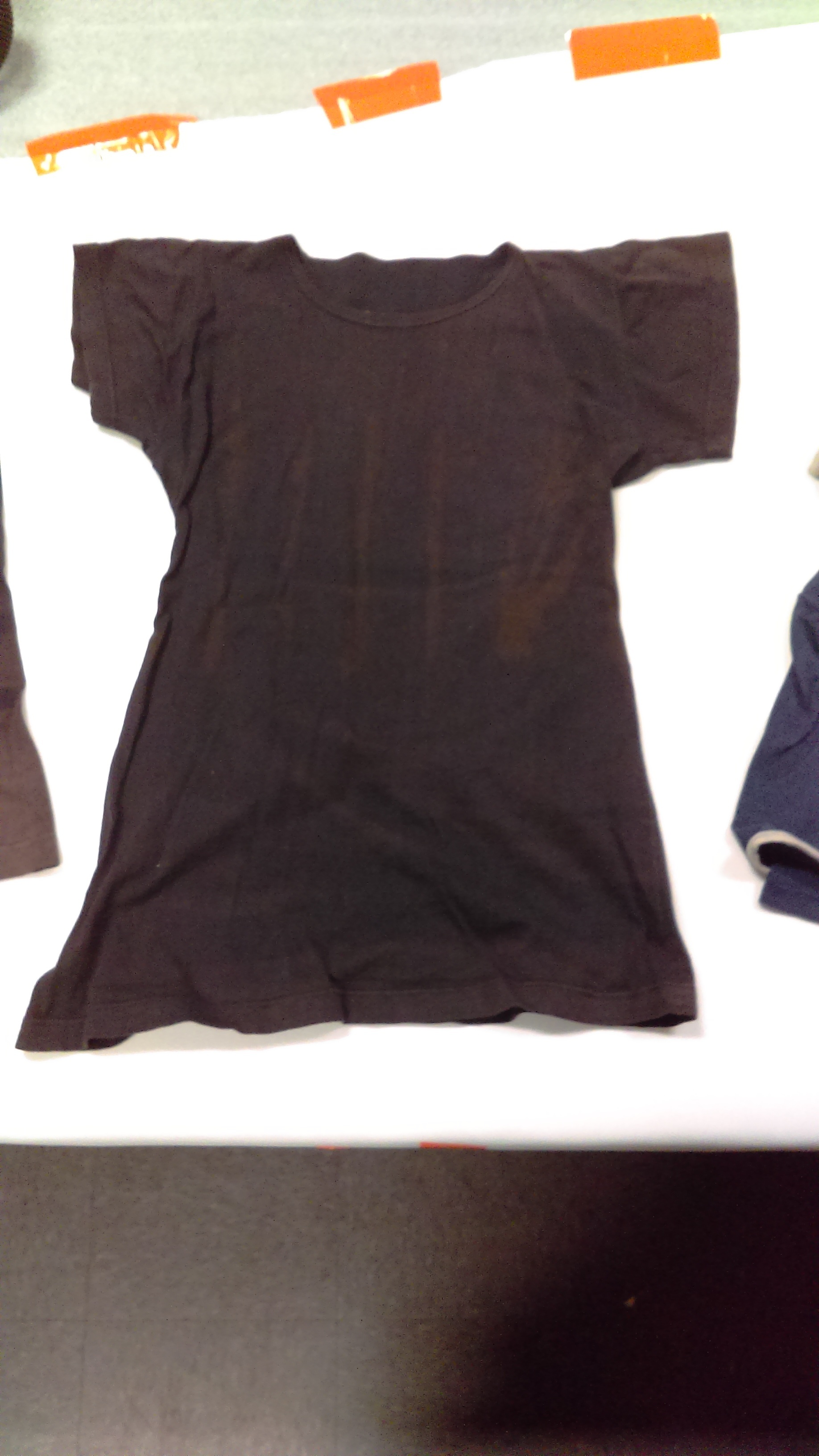
1900; MdHS; 1950.91.7 A; |
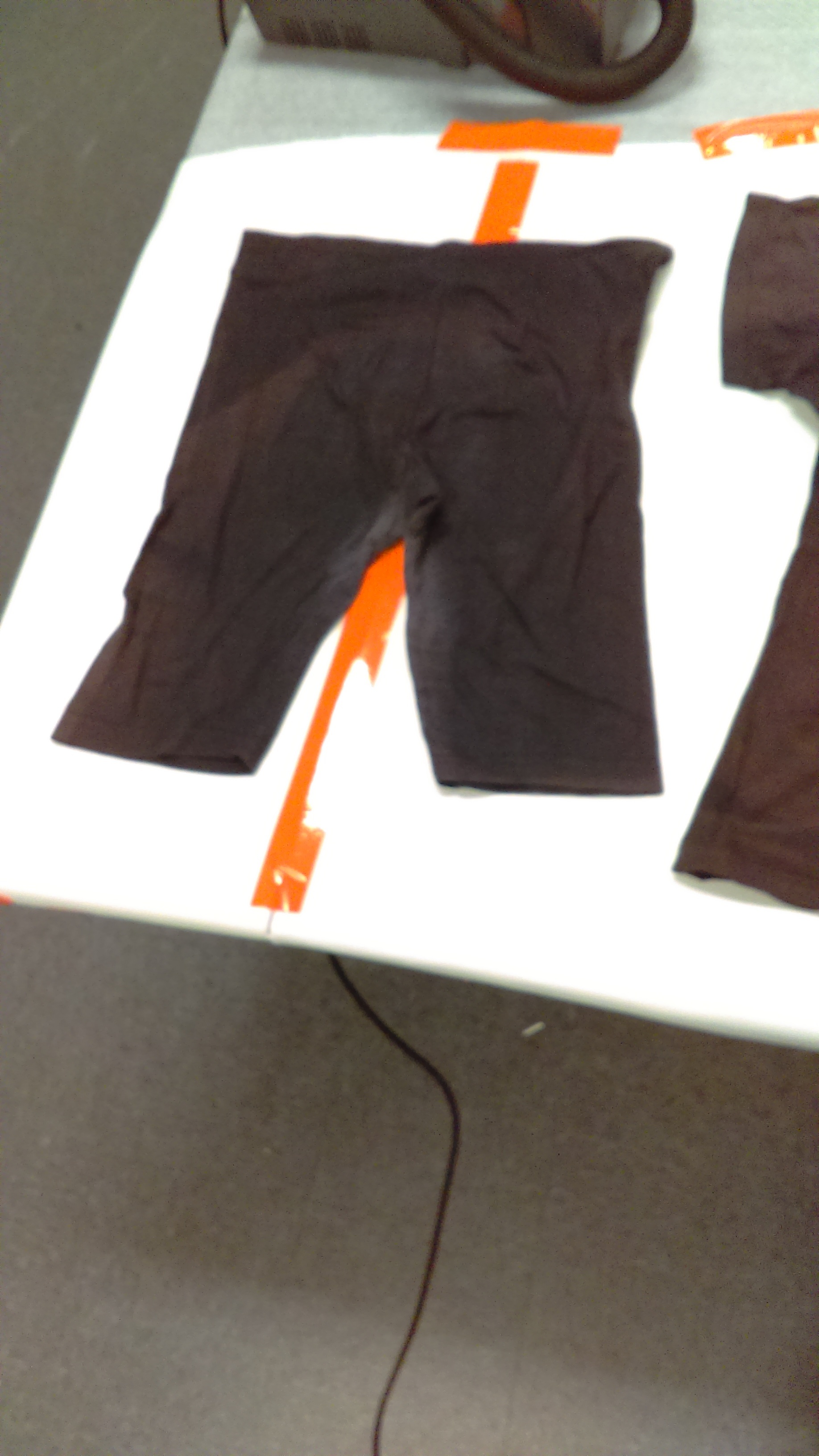
1900; MdHS; 1950.91.7 B; |
Inside this box was a 1900 dark blue knit two-piece swimming suit worn by the donor’s father, Mr. Vernon Cook. This garment is a fine example of what was known in the early 20th century as a “tank suit.” A tank suit was defined as a two-piece garment in a dark, solid color which covered the shoulders and upper arm and reached to below the knee. Modesty was an important aspect in all swimwear, exemplified by the Bathing Suits Regulations, published in 1917 in America, which detailed how to appropriately cover up at the beach (Caldwell; 2016).
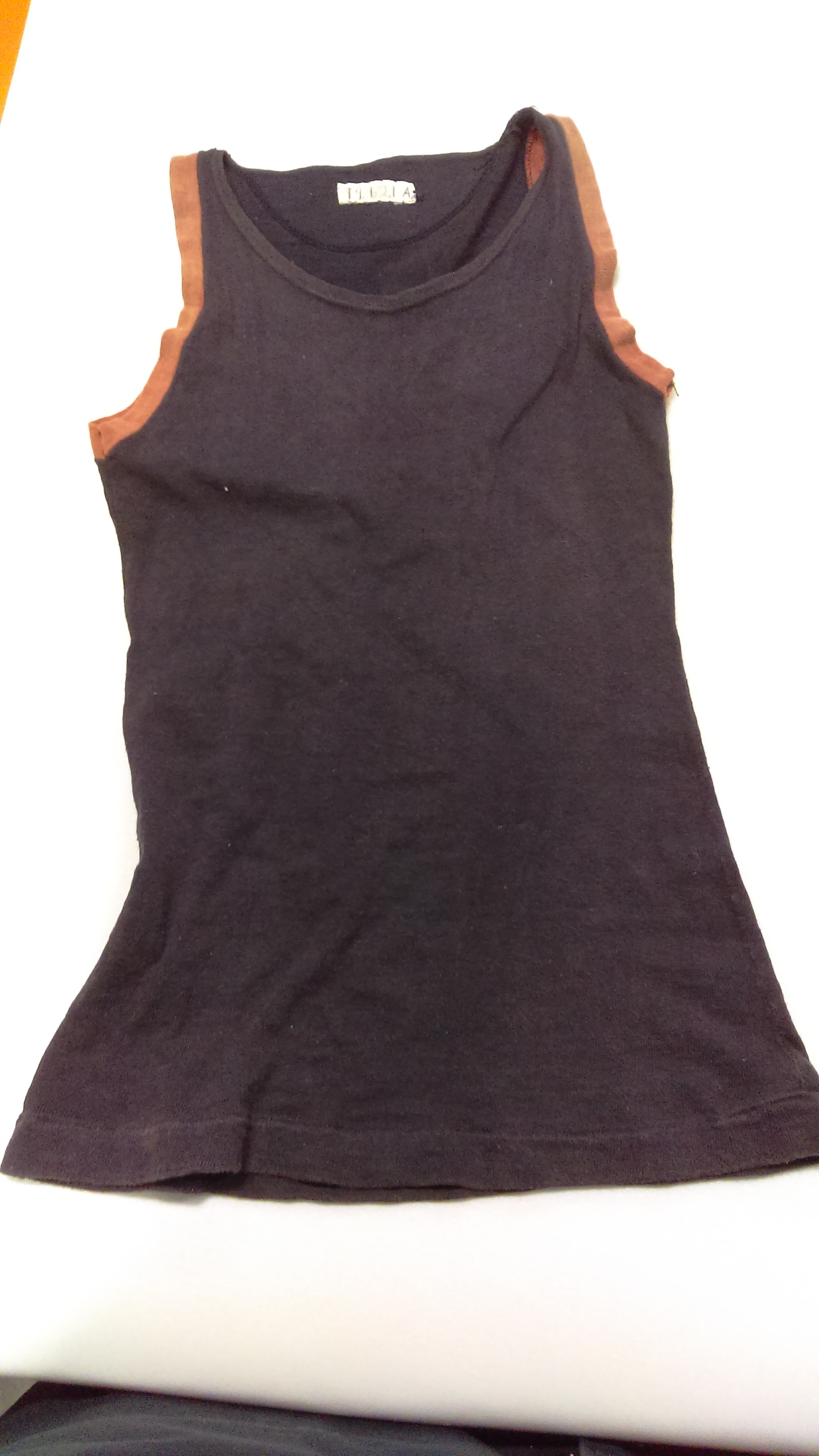
1910; MdHS; 1979.62.1 A; |
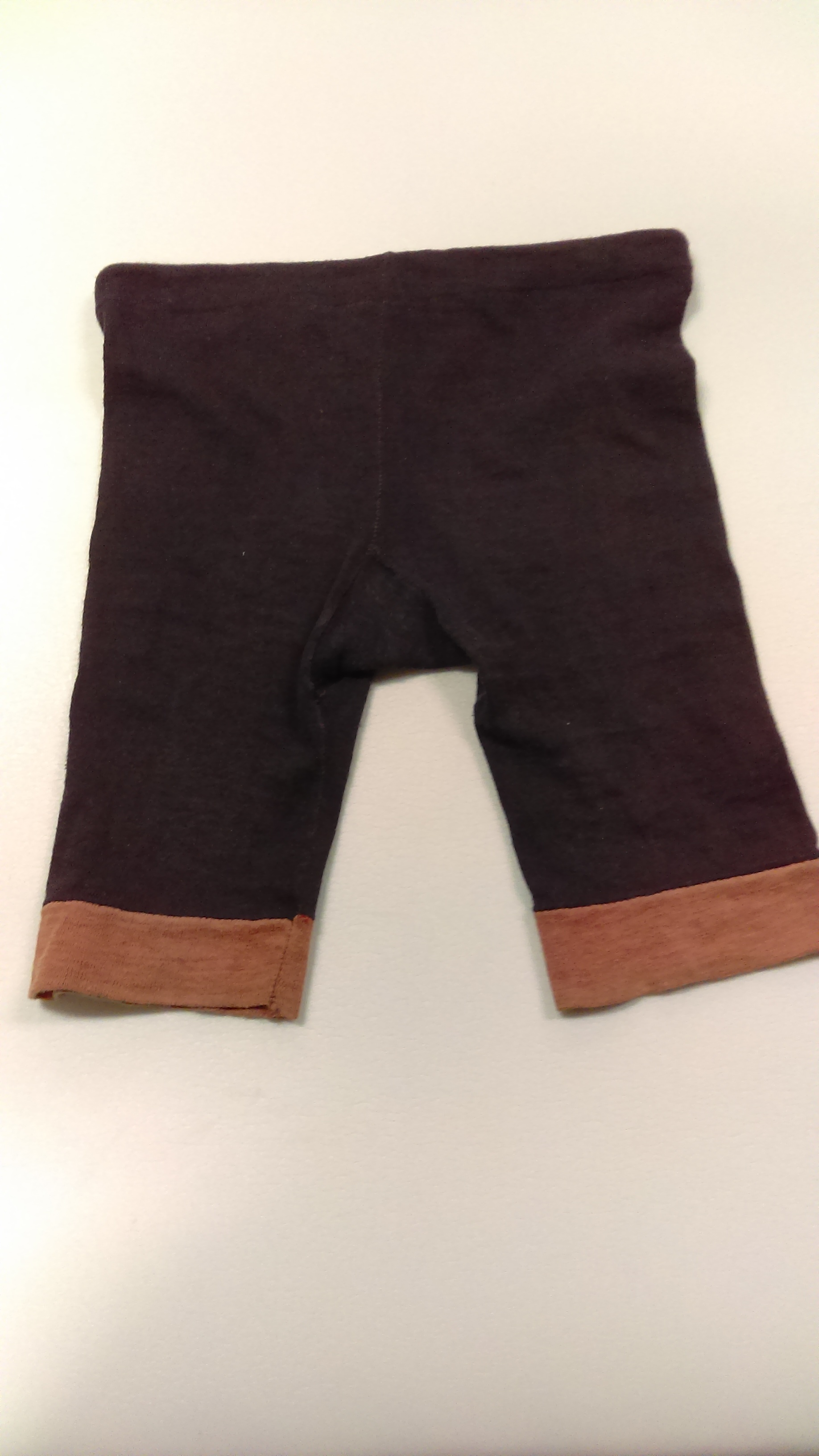
1910; MdHS; 1979.62.1 B; |
A 1910 young boy’s bathing suit was also found in the box. Worn by the donor’s uncle, Thomas Mahool Jr. (1904-1979), when he was six, the suit consists of a faded wool knit navy blue tank style top and long shorts with faded red cotton trim at the shoulder and leg hems. Although the garment’s shorts still extend to the knees, the lack of sleeves displays the evolution of men’s swimwear into more revealing and athletic styles.
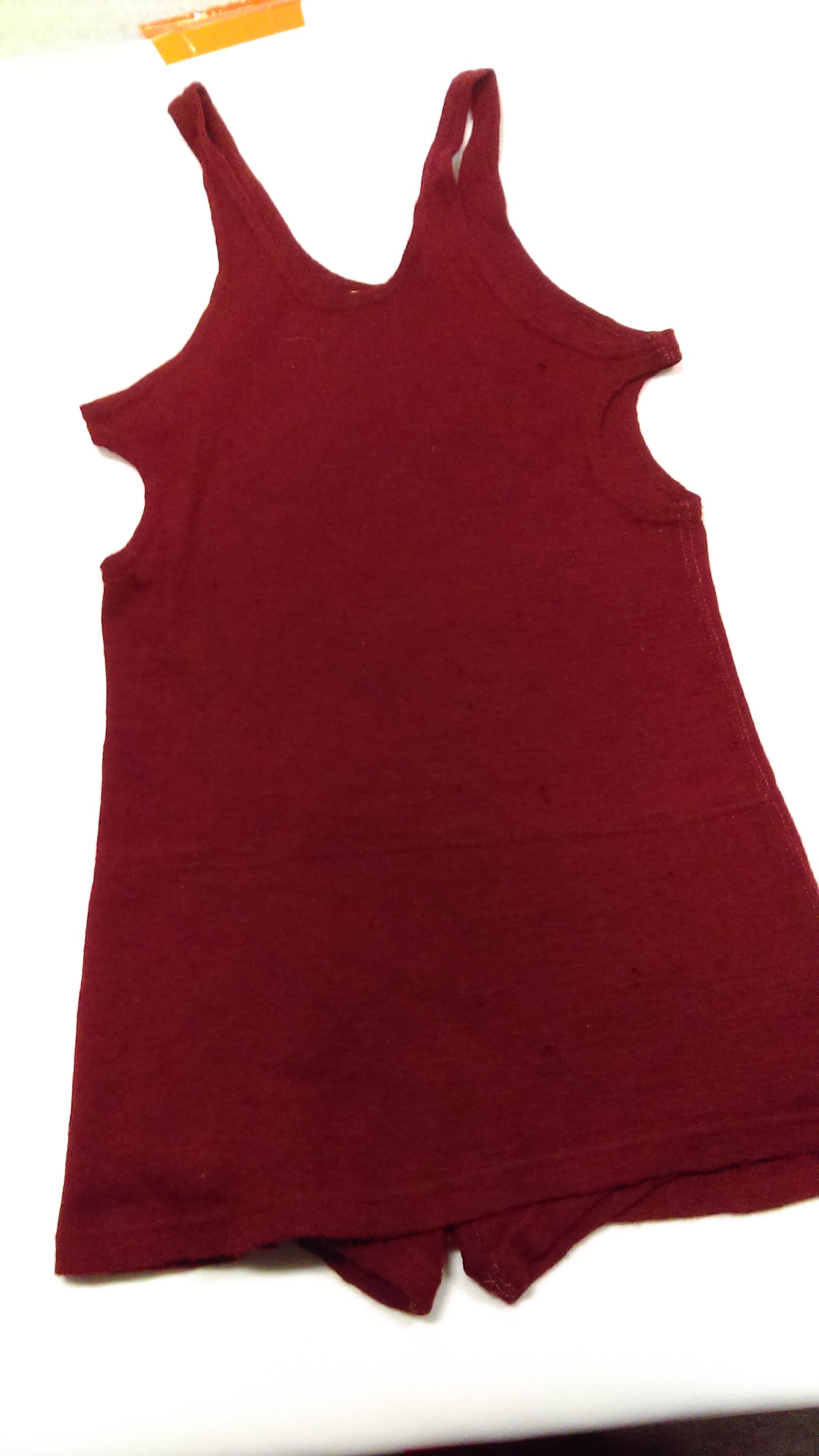
1920; MdHS 1978.13.1; Gift of Mrs. Louise H. Moody
The oldest costume in the box was a 1920’s men’s red wool knit one piece with short trunks, a low tank top, and cut outs under the arms. The garment was worn by the donor’s father, Mr. Edward J. Wilson, and contains a characteristic common in early 20th century – the use of a long shirt, or skirt, on order to cover the top of the trunks. The suit has shrunk due to its material – wool – but the trunks would have most likely extended well below the skirt. The low cut tank top and cut outs would have allowed the wearer not only a better tan line than earlier garments, but the lack of material would have granted the wearer a lighter, more flexible garment for swimming.
This summer has been an enlightening, exciting, and educational experience for me, suffused with information about textile conservation and the history of Baltimorean families, industries, and designers, as well. I am overwhelmed with appreciation for the MdHS staff that took the time to work with me, and for the interns that worked along side of me as we wondered at exquisite 19th century gowns, mourned for tattered silk linings, and wondered at the extensive MdHS collection we had the honor to work with.
References:
Caldwell, Robyn. “The History of Men’s Swimwear.” simplyswim. Retrieved 19 August 2016. https://www.simplyswim.com/blog/the-history-of-mens-swimwear/

